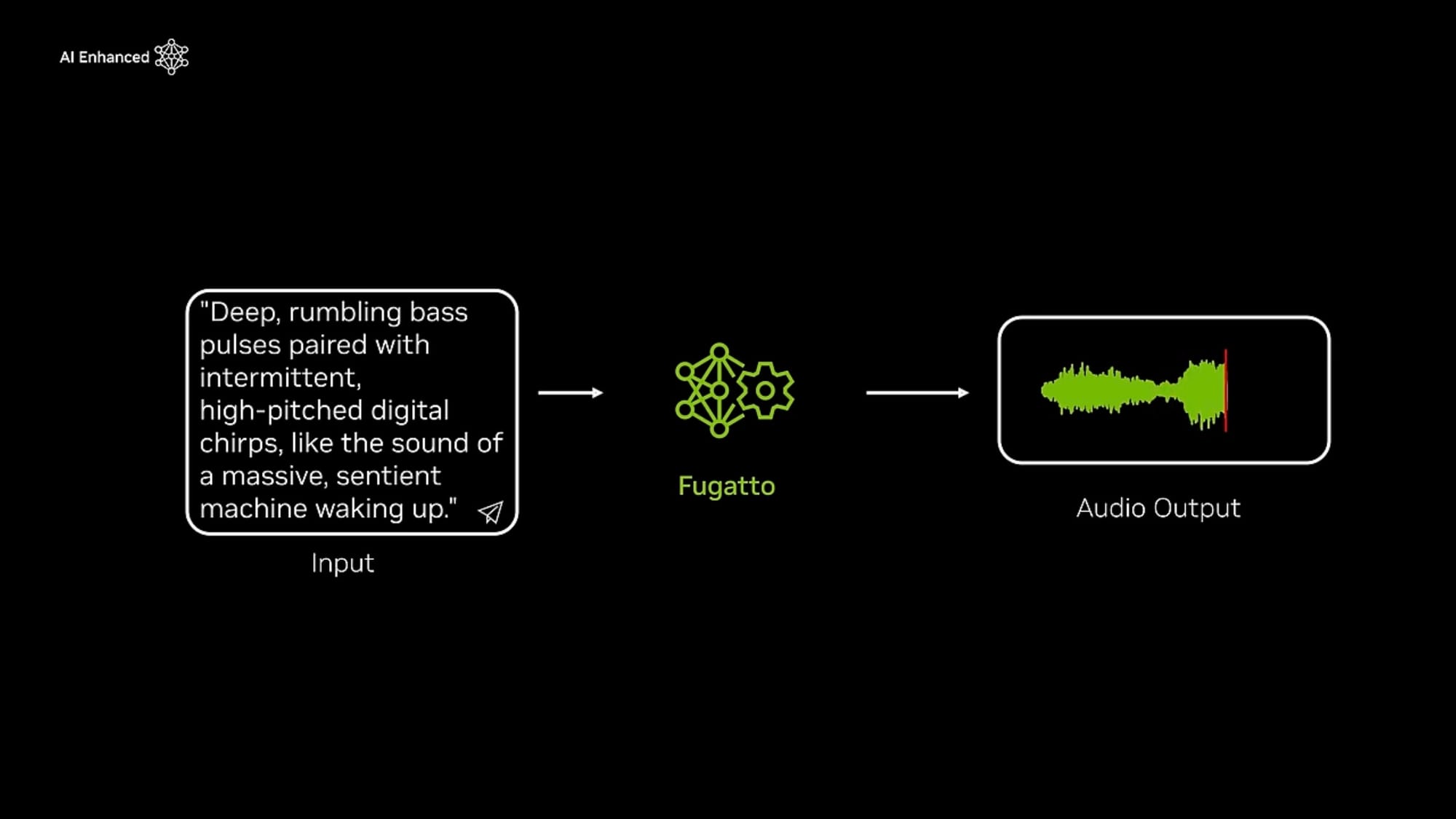NVIDIA Announces Generative Audio Transformer Fugatto
NVIDIA announces Fugatto, a generative AI model for creating and transforming audio with text prompts, enabling new possibilities in sound design.

NVIDIA has officially announced Fugatto, a groundbreaking generative AI model designed to transform how audio content is created and modified. Introduced in a blog post, Fugatto is positioned as a Foundational Generative Audio Transformer, capable of handling an extensive range of audio generation and transformation tasks using a combination of text prompts and audio inputs.
This announcement marks NVIDIA’s entry into the rapidly evolving field of AI-powered audio synthesis, aiming to empower creators across industries with an unprecedented level of control and flexibility over sound.
What is NVIDIA Fugatto?
Fugatto is an advanced AI model trained to generate and manipulate audio. It has the capability of crafting new pieces of music, modifying vocal tones, and transforming existing tracks. Fugatto provides users with a tool capable of delivering human-like results in real-time.
Core Capabilities
- Audio Generation: Generate music, sounds, or speech directly from text prompts (e.g., “Create a soft jazz piece with a saxophone lead”).
- Audio Transformation: Modify existing audio, such as changing the mood of a song, removing instruments, or adjusting vocal accents and emotions.
- Creative Flexibility: Produce unique, novel sounds, like having a violin play in the style of a bird chirping.
Announcement Highlights
NVIDIA’s announcement of Fugatto emphasized its emergent properties, a term describing the model’s ability to perform complex audio-related tasks that weren’t explicitly programmed.
Fugatto’s multitask learning enables it to:
- Combine and interpret multiple instructions simultaneously, such as generating speech with both a specific accent and an emotion.
- Provide fine-grained control over audio attributes, allowing users to adjust elements like pitch, tempo, and emotional intensity dynamically.
Another key innovation is ComposableART, a technique that allows Fugatto to combine instructions it encountered separately during training. For example, it can generate a “happy British accent” speech clip even if it was only trained on “happy” and “British accent” separately.
Practical Applications of Fugatto
NVIDIA highlighted several industries where Fugatto is expected to have immediate impact:
- Music and Sound Design: Artists and producers can use Fugatto to quickly prototype music ideas or edit tracks, modifying elements like instrumentation or mood.
- Video Games: Game developers can leverage Fugatto to dynamically generate or modify audio assets based on in-game events, providing more immersive experiences.
- Advertising: Agencies can localize campaigns by altering voiceovers to match regional accents or fine-tune emotional delivery for specific audiences.
- Education: Language learning platforms can use Fugatto to generate customized voice content in accents or tones familiar to learners, enhancing the educational experience.
- Accessibility: Fugatto’s capabilities could also enhance accessibility tools by generating clearer, more personalized speech for assistive technologies.
Why Fugatto Matters
NVIDIA’s latest reveal with Fugatto shows how generative AI could change the game in audio production. This tool makes high-end sound engineering tools available not just for the pros, but for anyone with a creative itch.
By leveraging NVIDIA's track record in AI, Fugatto isn't just another app; it's a leap forward for music creation, sound design, and tailored audio experiences.
This move solidifies NVIDIA's spot at the forefront of AI innovation, placing Fugatto alongside other game-changing AI models in video and language tech.